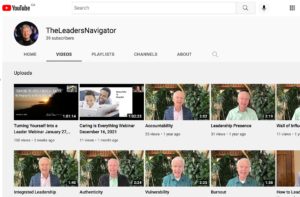How To Build A Respectful Workplace: It’s Not A Program
I recently overheard a manager talking with a colleague about how he was being sent to a “Respectful Workplace Program.” I couldn’t help but interrupt and ask him about it.
“Yes,” he explained. “Everyone in our company is required to attend a one-day training seminar on how to build a respectful workplace.”
Be assured that I am respectful of whoever might, with good intentions, be running a workshop on building respect in an organization. And even without any knowledge of what will be presented in the workshop, I’m sure that this program will undoubtedly bring valuable information.
But with all due respect (pun intended!), respect can’t be taught like mathematics. Building a respectful workplace, like building respect in your home or community doesn’t come from a training program. Respect isn’t about speaking to each other nicely or holding hands or hugging each other. While we could all use a refresher in good manners, respect goes much deeper than techniques or even behavior.
If you want improve a disrespectful workplace you have to get to the root cause of the problem. A respectful workplace is achieved – and sustained – through one critical element: respect for yourself. When you have self-respect you won’t tolerate bullying, inappropriate, disrespectful comments, or people acting unprofessionally. You have the same standards for yourself as you expect from others. When you have respect for yourself you don’t demean others or act in ill-mannered ways. You have better things to do with your time, and you have no interest in being disrespectful to others. You won’t find yourself entangled in hurtful, useless and hurtful arguments. And you won’t let others disrespect you.
Here are four strategies for increasing your level of self-respect. Just as anyone can be a leader, anyone can put these into practice, beginning today. As you do, notice the positive impact and benefit to your workplace by increasing the respect around you.
- Never make a promise you aren’t prepared to keep. Self-respect, like confidence, is an outcome of right choices, not a prerequisite. Learning to keep promises, whether it is to your child to attend his baseball game or to yourself to keep up good health habits, results in personal integrity. Keeping promises to yourself and others, even in the face of discomfort and the tendency toward complacency, gives you confidence to get through the hard times. As the late Stephen R. Covey used to say, private victory precedes public victory.
- Create focus in your life. Clarity around your highest values, a sense of purpose, daily disciplines around your health, and an ongoing personal development plan are all ways that contribute to how you feel about yourself. People who respect themselves take care of themselves. And they spend their time being of service to others. When you start paying attention, you will notice that people with focus and clarity in their lives aren’t part of the gossiping crowds. They don’t have time for complaining or blaming others or being a part of disrespectful conversations. They are too busy focused on being useful in the world.
- Take the high ground. If you are wondering why people yell at you or degrade you or act in disrespectful ways, it’s simple. Because you let them. You don’t have any obligation to tolerate disrespectful behavior. You don’t have to become lazy even if the people you work with are lazy. You don’t have to get involved in ill-mannered arguments. A leader I have high regard for told me once, “Never argue with an idiot because they will bring you down to their level and beat you with experience.” Live on the foundation good principles, even if the people around you don’t appreciate it. Do the right thing, because the right thing will make things right inside of you.
- Be a light, not a judge. The disciples of a Hasidic rabbi approached their spiritual leader with a complaint about the prevalence of evil in the world. Intent upon driving out the forces of iniquity and darkness, they requested that the rabbi counsel them. The rabbi’s response was one that can help us all come to grips with the malevolent forces of darkness that at times seem to surround our world. The rabbi suggested to his students that they take brooms, go down to the basement, and attempt to sweep the darkness from the cellar. The bewildered disciples applied themselves to sweeping out the darkness, but to no avail. The rabbi then advised them to take sticks and beat vigorously at the darkness to drive out the evil. When this likewise failed, he counseled them to again go down to the cellar and to protest against the evil. When this failed as well, he said, “My students, let each of you meet the challenge of darkness by lighting a lamp.” The disciples descended to the cellar and kindled their lights. They looked, and behold! The darkness had been driven out.
Self-respect doesn’t guarantee that others will treat you with respect. What it does do is guarantee that you won’t tolerate disrespect. When disrespect is no longer tolerated, it will soon cease to exist.
I’d love to hear from you about some of your organizational challenges if you are working in a disrespectful workplace or relationship. Send me your thoughts on my contact page. I’d be glad to schedule a complimentary ½ hour session to discuss your situation.


